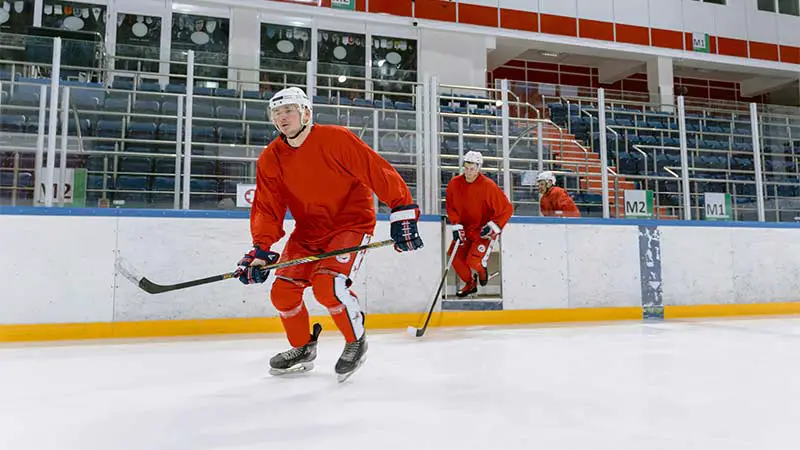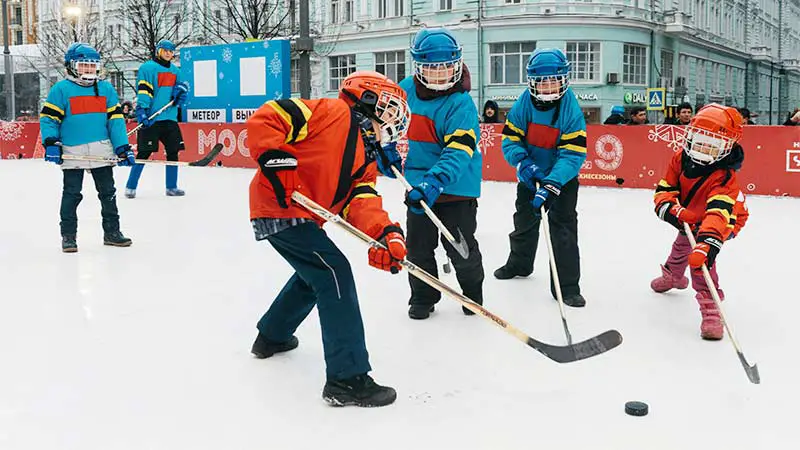In the fast-paced world of hockey, the abbreviation SOG or S often pops up on scoreboards and player statistics, leaving many wondering about its significance.
So, what exactly does SOG mean in hockey? SOG stands for shots on goal, a crucial metric used to monitor the number of shots taken by players, teams, or faced by goalies.
A shot on goal is credited when the goalie must make a save that would have resulted in a goal if not stopped. It’s a key indicator of offensive performance and defensive prowess on the ice.
Understanding the concept of SOG is vital for players, coaches, and fans alike, as it provides valuable insights into a team’s offensive strategies and a goalie’s effectiveness in defending the net.
By tracking SOG, analysts can evaluate shot quality, player performance, and overall team tactics, shedding light on the intricacies of the game beyond just goals scored.
Understanding SOG in Hockey
What Does SOG Stand For?
In hockey, SOG stands for “Shots on Goal.” This metric plays a vital role in tracking the number of shots attempted by players or teams that are directly aimed at the opposing team’s net.
A shot on goal is recorded when the goalie must make a save that would have resulted in a goal if not stopped.
This statistic is instrumental in evaluating offensive performance, defensive capabilities, and overall gameplay strategies in hockey.
SOG’s Importance in Game Analysis
Analyzing Shots on Goal (SOG) is crucial for gaining insights into various aspects of the game. For players, coaches, and fans, understanding SOG provides valuable information on offensive strategies, goalie performance, shot quality, and overall team tactics.
It serves as a key indicator of team efficiency, individual player effectiveness, and the overall competitive dynamics during a hockey match.
By tracking SOG, stakeholders can assess scoring opportunities, defensive strengths, and areas for improvement to enhance their performance on the ice.
The Impact of SOG on Player Performance

Assessing Goalies Through SOG
When assessing goalies in hockey, Shots on Goal (SOG) play a pivotal role. SOG reflects the number of shots that reach the net and are stopped by the goalie, providing insights into the goalie’s effectiveness in preventing goals.
Goalies with a high number of saves from SOG are considered crucial assets for their teams, showcasing exceptional reflexes and strategic positioning to thwart scoring attempts.
Evaluating goalies based on their SOG performance helps coaches and analysts gauge defensive capabilities and make informed decisions about goalies’ roles within the team.
How Field Players Utilize SOG?
For field players in hockey, understanding and leveraging Shots on Goal (SOG) is essential for enhancing offensive strategies and individual performance.
Field players aim to create scoring opportunities by directing shots on goal to challenge the opposing team’s goalie.
A high SOG count indicates the player’s active involvement in offensive plays, showcasing their shooting skills, accuracy, and goal-scoring potential.
By analyzing SOG data, coaches and players can identify areas of strength and improvement, optimize offensive tactics, and track individual player contributions to the team’s overall performance on the ice.
Team Dynamics and SOG

Strategic Planning with SOG Metrics
Utilizing Shots on Goal (SOG) metrics is crucial in strategic planning for hockey teams. By analyzing the number of shots attempted directly at the opposing team’s net, coaches can assess offensive performance and shooting accuracy.
Teams leverage SOG data to identify scoring trends, evaluate their offensive strategies, and make real-time adjustments during games or practices.
This statistic enables coaches to fine-tune tactics and maximize scoring opportunities based on the team’s shooting efficiency and effectiveness.
SOG in Team Evaluations
In hockey, Shots on Goal (SOG) play a vital role in team evaluations, providing valuable insights into offensive prowess and overall performance.
Coaches and analysts rely on SOG statistics to assess team dynamics on the ice, track individual contributions, and optimize player roles.
Teams use SOG data to evaluate offensive strategies, identify scoring opportunities, and enhance shooting skills.
By monitoring SOG metrics, coaches can make informed decisions to improve team performance and achieve success on the ice.
Comparing SOG with Other Key Hockey Statistics
SOG vs. Assists and Goals
Shots on Goal (SOG) in hockey provide valuable insights into offensive performance, complementing the traditional metrics of assists and goals.
While assists and goals focus on the final outcome of a scoring play, SOG offer a deeper understanding of the offensive process.
By comparing SOG with assists and goals, coaches and analysts can evaluate the efficiency of players in creating scoring opportunities and converting them into successful plays.
Understanding the correlation between SOG, assists, and goals helps teams optimize their offensive strategies and maximize their scoring potential on the ice.
The Interplay Between SOG and Goaltender Stats
The relationship between Shots on Goal (SOG) and goaltender statistics is crucial in assessing defensive effectiveness and goaltender performance.
Goaltender stats such as save percentage and goals against average are closely linked to the number of SOG faced during a game.
Analyzing the interplay between SOG and goaltender stats enables teams to evaluate defensive strategies, identify areas for improvement in goalkeeping, and make informed decisions to enhance overall defensive resilience.
By understanding how SOG influence goaltender performance, teams can optimize their defensive tactics and strive for greater success on the ice.
Improving SOG: Tips for Players and Coaches
To enhance Shots on Goal (SOG) performance in hockey, players and coaches can implement various strategies that focus on increasing offensive opportunities and maximizing scoring chances.
By optimizing SOG metrics, teams can improve their overall effectiveness on the ice. Here are some valuable tips for players and coaches looking to elevate their SOG numbers:
1. Shot Selection and Accuracy
- Shot Selection: Encourage players to take high-percentage shots in strategic positions on the ice to increase the likelihood of shots on goal.
- Accuracy Training: Emphasize the importance of accuracy in shooting drills to ensure shots have a better chance of reaching the net.
2. Offensive Zone Positioning
- Net-front Presence: Instruct players to position themselves near the net to capitalize on rebounds and deflections, leading to more shots on goal.
- Traffic in Front: Create opportunities by screening the goaltender to obstruct their view and increase the chances of shots finding the back of the net.
3. Quick Transitions and Puck Movement
- Transition Game: Focus on quick transitions from defense to offense to catch opponents off guard and create scoring chances.
- Puck Movement: Emphasize moving the puck efficiently to maintain possession and generate shooting opportunities.
4. Power Play Efficiency
- Special Teams Strategy: Develop effective power play strategies to maximize SOG during man-advantage situations.
- Player Movement: Implement player rotations and movement patterns to create open shooting lanes and increase shot attempts on goal.
- Identifying Gaps: Study opponent defensive formations to exploit weaknesses and create SOG opportunities.
- Counter Strategies: Develop strategies to counteract strong defensive teams and find ways to generate shots against tough opponents.
By focusing on these key areas and implementing tailored strategies, both players and coaches can work towards optimizing Shots on Goal (SOG), leading to improved offensive performance and increased scoring opportunities on the ice.
Frequently Asked Questions
Why are Shots on Goal (SOG) important in hockey?
Shots on Goal (SOG) are crucial in hockey as they indicate scoring opportunities, player effectiveness, and overall team performance. Evaluating SOG statistics helps teams understand their offensive and defensive strengths, make strategic adjustments, and capitalize on scoring chances.
How can coaches use SOG data for analysis?
Coaches utilize SOG data to strategize game plans, assess shooting accuracy, and modify tactics in real time. Analyzing SOG metrics enables coaches to optimize team efficiency, track player contributions, and enhance offensive strategies for better performance on the ice.
What tips can help players and coaches improve SOG performance?
Players and coaches can enhance SOG performance by focusing on shot selection, offensive positioning, quick transitions, power play efficiency, and identifying opponent weaknesses. By implementing these strategies, teams can increase their SOG numbers, leading to improved offensive output and more scoring opportunities during games.
Conclusion
Understanding the importance of Shots on Goal (SOG) in hockey is crucial for both players and coaches. SOG metrics provide valuable insights into team efficiency, player effectiveness, and strategic planning.
By focusing on shot selection, offensive positioning, and identifying opponent weaknesses, teams can enhance their SOG performance. Coaches can utilize SOG data to make real-time adjustments and analyze shooting accuracy.
Implementing strategies to optimize SOG can lead to improved offensive performance and increased scoring opportunities on the ice.
By emphasizing the significance of SOG in evaluating both offensive and defensive aspects of the game, teams can work towards achieving their goals and staying ahead of the competition.








James Felix